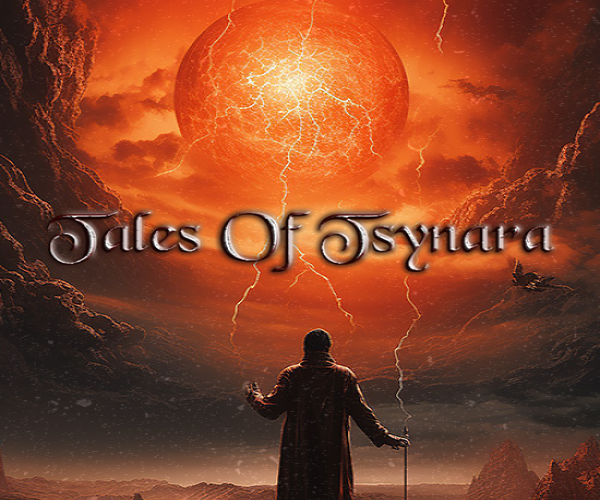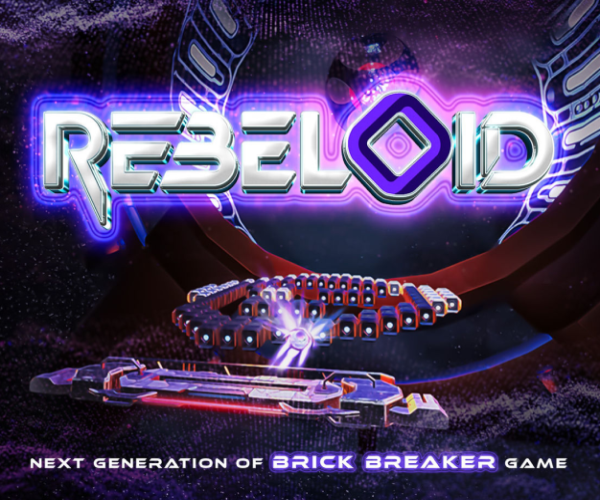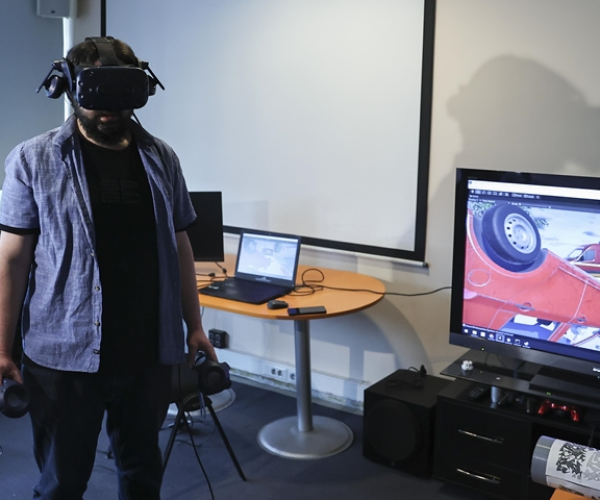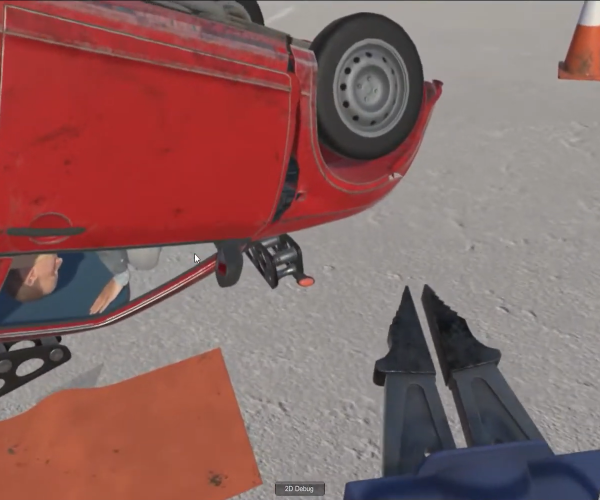VR-AR Projects
Here are some of the projects I've developed in the Virtual and Augmented Reality space, showcasing my expertise across various platforms and technologies.
Tales Of Tsynara (Meta Quest 2 VR Game)
As the sole developer, I brought to life "Tales Of Tsynara," an immersive First-Person RPG for Meta Quest 2. Players step into the role of a powerful wizard, casting spells and exploring an ancient world corrupted by a fallen mage. I utilized the Unity Game Engine for the entire development.
My responsibilities spanned the entire development lifecycle, including:
- Full Game Development: Architecting and coding all core mechanics and systems using the Unity Game Engine.
- Visual Effects (VFX) & Shaders: Crafting compelling magical effects and environmental atmospherics primarily with Unity's Particle System, and designing custom and shader graphs for unique visual elements like enemy effects and lava materials.
- Performance Optimization: Significantly boosting game performance by over 400% through rigorous code, render, shader, and physics optimizations, ensuring a smooth and responsive VR experience.
This project highlights my ability to deliver a complete, high-performance VR title independently, demonstrating both creative vision and deep technical proficiency.

Rebeloid - Brick Breaker (Meta Quest VR Game)
As the sole developer, I led the implementation of "Rebeloid - Brick Breaker," an immersive VR arcade game for Meta Quest 2. This project offers a modern, engaging twist on the beloved brick-breaking experience, leveraging virtual reality for intuitive and dynamic gameplay.
My contributions included:
- Full Game Development: Architecting and coding all core mechanics and systems using the Unity Game Engine.
- Visual Effects (VFX) & Shaders: Creating impactful in-game visual effects primarily with Unity's Particle System, and designing custom shaders and shader graphs for dynamic effects like enemy visibility/invisibility and essential VFX materials.
- Performance Optimization: Achieved a significant performance improvement of over 300% through comprehensive code, render, shader, and physics optimizations, ensuring fluid gameplay even in intense moments.
This project showcases my ability to deliver highly optimized, engaging VR experiences as the primary developer within a professional setting.

Fire Department Personnel Training Applications (Multi-Platform XR System)
This comprehensive R&D project aimed to revolutionize emergency responder training by exploring the efficacy of AR/VR devices as advanced educational tools. As the sole developer, I created an integrated system featuring three distinct applications across VR, AR, and PC, designed to provide cost-effective and data-driven training for fire department personnel.
The primary goals included significantly reducing the high costs associated with physical training (expensive rescue equipment and vehicles) and evaluating the potential of immersive technologies for complex procedural education.
My work encompassed:
- AR Training Application (Microsoft HoloLens & Custom Hardware):
- Developed for Microsoft HoloLens, this application teaches the precise usage of search and rescue tools like hydraulic cutters, spreaders, and crossrams (simulating tools similar to the LUKAS S 312 E2).
- Utilized Unity Game Engine for HoloLens development.
- Custom Networking Protocol: Engineered a custom UDP protocol for local network communication to overcome partial .NET limitations on HoloLens, enabling seamless data exchange with external hardware.
- Integrated Vuforia for robust QR code tracking to precisely overlay holographic tool models onto custom 3D-printed tool replicas.
- Hardware Integration: Implemented Arduino (ESP32) with a 9-DOF gyroscope within 3D-printed tool models. User interactions (e.g., pressing buttons, pulling levers) on the physical model were sent to the HoloLens app, triggering accurate holographic animations and procedural guidance.
- Significant Performance Optimization: Achieved a substantial performance boost from 24 FPS to 50 FPS in Vuforia SDK, further optimized to a final 56-57 FPS on HoloLens through extensive code and rendering optimizations.
- VR Training Application (HTC Vive - Multiplayer):
- Developed for HTC Vive, this multiplayer application trains fire department personnel in complex rescue operations, specifically extricating injured individuals from overturned vehicles.
- Enabled collaborative training for two players, allowing them to practice coordinated roles (e.g., one person stabilizing the crash site while the other operates hydraulic rescue tools).
- Coded all mechanics and networking from scratch in Unity Game Engine, utilizing Photon PUN for robust multiplayer functionality.
- High Performance: Achieved a 165% performance increase through comprehensive code, render, shader, and physics optimizations for a smooth and realistic VR simulation.
- Personnel Data Analysis Application (Windows PC):
- Developed a dedicated Windows application for training directors to access and analyze local database data collected from the AR and VR training modules.
- Tracked critical metrics including: time taken per task, number of mistakes, total scenario completion time, and instances of distraction (e.g., looking at wrong objects too long).
- This data was vital for identifying training weaknesses, tracking individual progress, and ensuring personnel mastered crucial safety protocols and efficiency, ultimately improving real-world rescue mission outcomes where every second counts.
While this was a confidential business-to-business project, its public acknowledgment highlights its innovative nature and real-world impact:


Ziçev - Vocational Skills Training (Augmented Reality)
For Ziçev, an educational institution dedicated to empowering individuals with special educational needs, I developed three Augmented Reality (AR) applications as the sole developer. This project was a key component of their "Technology-based vocational training laboratory project for people with disabilities," designed to maximize potential and foster self-sufficiency, independence, and productivity.
My work involved creating a comprehensive AR training suite for Microsoft HoloLens, using the Unity Game Engine:
- HoloLens Adaptation & Onboarding Application:
- The first application focused on familiarizing users with the Microsoft HoloLens device itself.
- It incorporated a highly accessible user experience through combined voice inputs and HoloLens's default input system, guiding users with clear audio cues and supporting visuals.
- Vocational Skills Training Applications (x2):
- The second and third applications provided practical vocational skills training within the AR environment.
- Utilized Vuforia for robust image tracking, enabling interactive AR overlays for hands-on learning.
- These applications demonstrate the effective application of AR for complex educational scenarios, tailored for a diverse user base.
This project highlights my ability to leverage cutting-edge AR technology for social impact, developing intuitive and effective training solutions for specialized educational needs from conception to deployment.
As this was a confidential business-to-business project, direct application links or source codes are not publicly available. However, you can learn more about the project's context via Ziçev's website:
